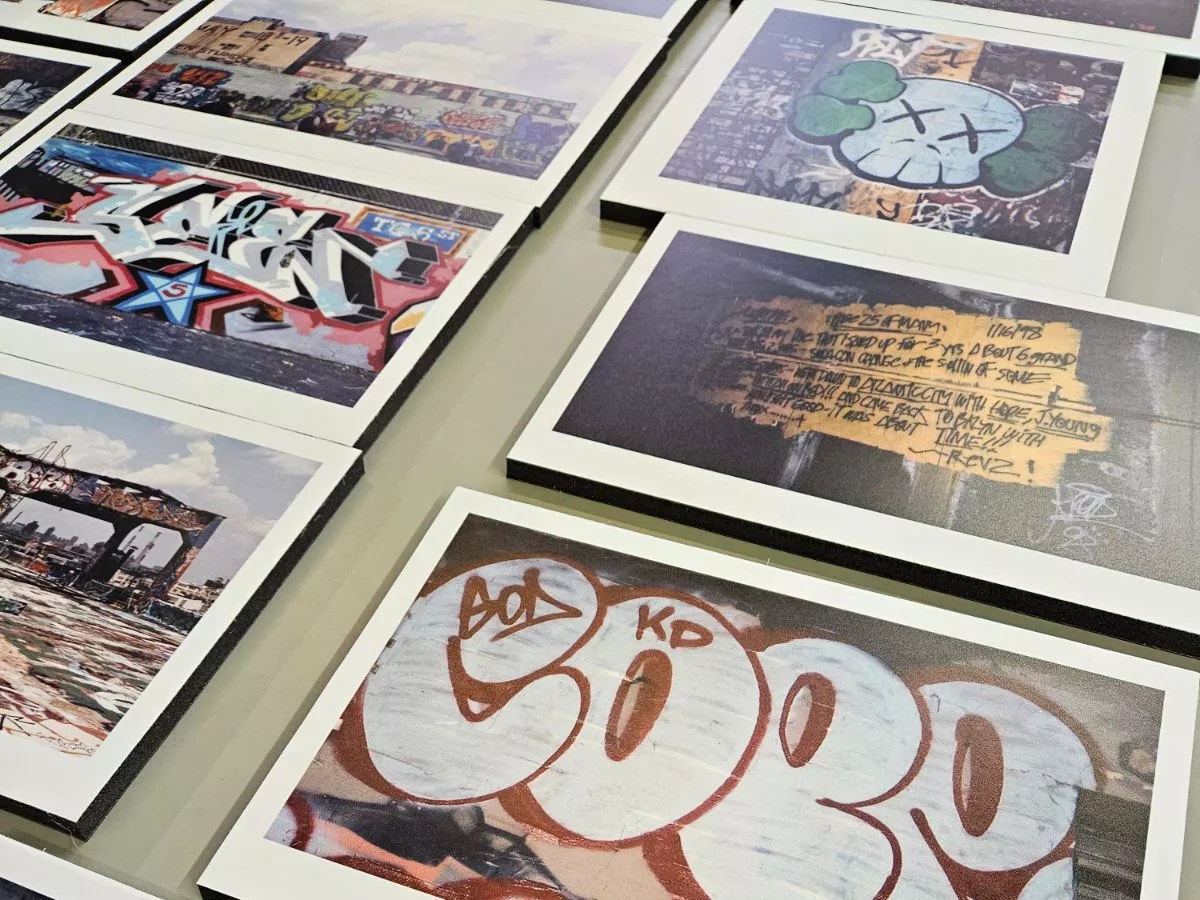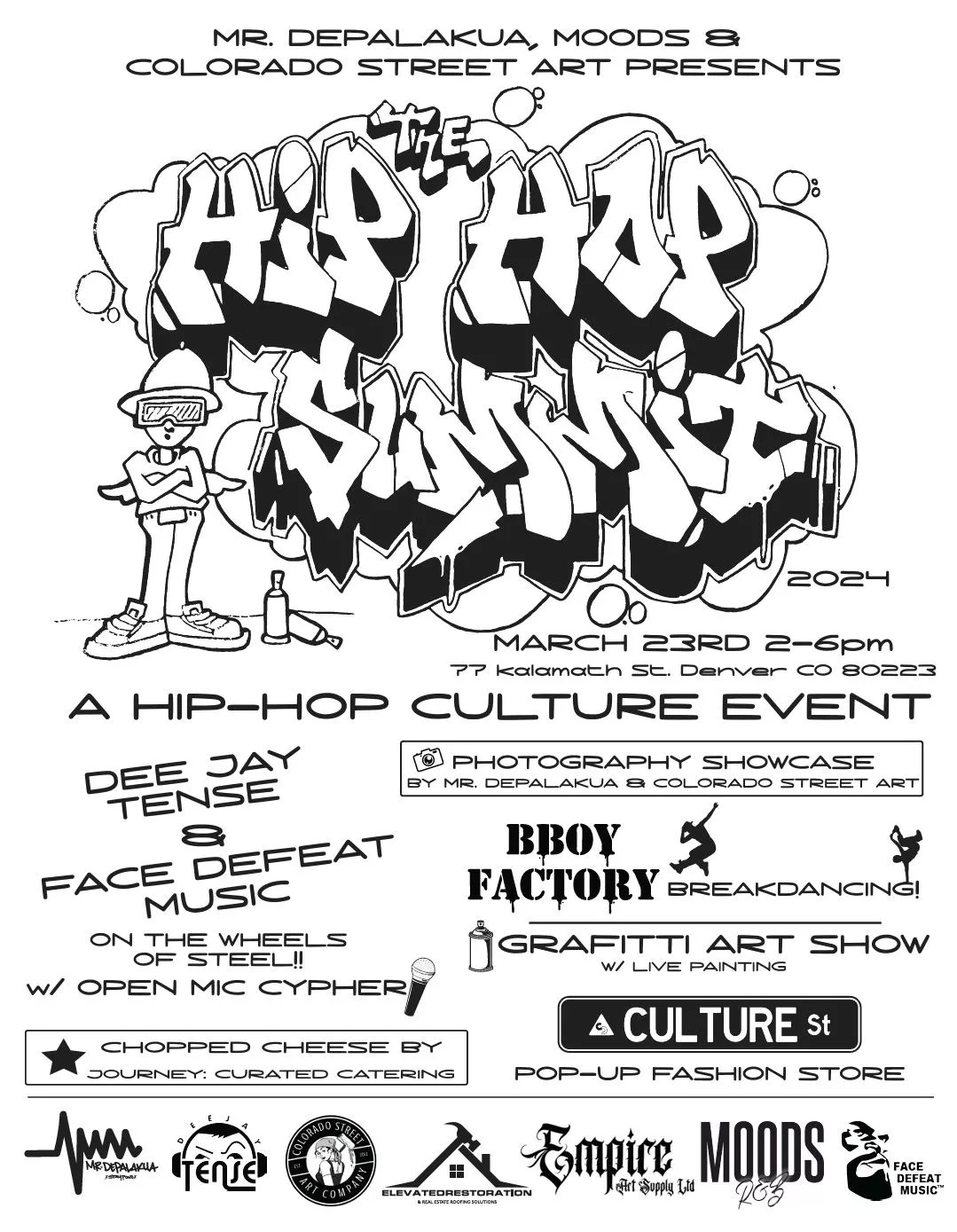
Adam Clark

Audio By Carbonatix
From the 1990s to the early 2000s, Brooklyn-born Jarred De Palo walked through all five boroughs of New York City, snapping photos of the street art and graffiti that coated subway tunnels and trains, alleys and warehouses. There was 5 Pointz in Queens, also known as the Phun Phactory; the now-leveled building once housed hundreds of artist studios, its exterior colored by artists who traveled there from around the globe to make their mark. He would also go to the Graffiti Hall of Fame, a schoolyard in East Harlem that was designated a style-writer haven in 1980, watching the walls morph under layers and layers of spray paint applied by some of the best graffiti artists in the world, as breakdancers spun to live beats by DJs armed with vinyls.
“I would go there all the time, and there would be a DJ setup, twenty different graffiti artists from all throughout New York and even out of state,” recalls De Palo, who was also a breakdancer and graffiti artist.
“It wasn’t even a scheduled, planned event,” he adds. “You could show up there on any weekend and it was just hip-hop culture, live and direct.”
That’s what De Palo wants to bring to Denver with the inaugural Hip-Hop Summit, the event he’s throwing on Saturday, March 23, with Adam Clark of Colorado Street Art and BJ Quarles, a promoter for Moods R&B who is the general manager at ABC Imaging. That quiet print shop at 77 Kalamath Street will soon be bursting with the energy of ’90s-era MTV, emulating those renegade gatherings of hip-hop’s glory days.
“I’ve had these pictures for twenty-plus years, and I’ve never showcased them, and I thought it would be a really cool idea to do so, so I brainstormed on how to bring it to fruition,” De Palo explains. “I knew Adam was documenting Colorado art for the last ten years the way I was documenting in New York for the time I was there.”
So De Palo reached out to Clark to see if he wanted to show their photos together, and Quarles agreed to lend his space. “And then we got the idea to just do a full hip-hop show,” he says, “because one of the elements of hip-hop is graffiti.”

Photos taken by Jarred De Palo.
Adam Clark
Hip-hop isn’t just a music genre – it’s a culture comprising five elements: deejaying, emceeing, graffiti, breakdancing and fashion. The Hip-Hop Summit will cover all those facets, with DJ sets from Face Defeat Music and DJ Tense along with two open-mic cyphers, breakdancing from Bboy Factory and a pop-up shop by local streetwear company Culture Street. The art on the walls will include the photography archives of De Palo and Clark, but there will also be live-painting by a selection of storied street artists: Jher451, Chris Haven, SR.PIGR, TINZ, DCUE and Dreamscape.
“We wanted it to be more of a cultural promotion for the culture of hip-hop,” Quarles says. “Our generation was so influenced and raised on it.”
“What I’m excited about is the bringing of the pillars together,” Clark adds. “I’ve been doing hip-hop events where they’re primarily rapping and DJs, I’ve been to breakdancing events and graffiti jams – but nothing like this. We’re bringing it all together for the culture.”
And because graffiti ties into skateboard culture (Chris Haven, known for the signature triangular dudes you’ll find throughout Denver, is a talented skater, De Palo notes), the event will also include Th!s Project. “They build skateboard parks for finger-skateboard decks, so they’re bringing a mobile skateboard park for people to be interactive with the little finger skateboards,” De Palo says.

A finger-skateboard park by Th!s.
Adam Clark
The organizers are all passionate about expanding hip-hop culture in Denver. Like De Palo, Quarles is an East Coast native, growing up in Pennsylvania and later living in New York. “We were completely raised and burst off of hip-hop. It’s been my entire life,” Quarles says. “Growing up in the culture and in the places that created it, all of the elements were always part of our lives.” Once he moved to the Mile High City in 2007, Quarles immediately began networking with DJs and creating and promoting hip-hop events.
But while this city’s street-art scene has boomed, the lively hip-hop culture that the Summit organizers experienced when they moved here in the early 2000s has waned. Although Denver has a long way to go in giving hip-hop a platform – the city is still bereft of a venue dedicated to the genre – there are many local artists who are taking up the torch themselves. Events both longstanding and new are also lighting the way, such as Face Defeat’s Beats Bodega, the Solution by DJ Low Key and DJ Lazy Eyez, and the Wolf Wednesdays open-mic night. And now, the Hip-Hop Summit.
“Denver has a history of loving hip-hop; there’s no doubt about that…but the outlet for hip-hop has lessened,” Quarles acknowledges. “Even when I first moved here in 2007, there was more exposure and more events and spaces for hip-hop-influenced art forms.”
“I think, obviously, New York is a much larger scale – more stuff going on all the time. But if you’ve got five million people in New York that love hip-hop and you’ve got 5,000 people in Denver that love hip-hop, that love is the same level,” De Palo notes.

Dancers from Bboy.
Adam Clark
While several hip-hop artists in Denver have expressed frustration at the lack of a substantial community, De Palo says that he senses it’s “coming back”; the community that does exist is easy enough to find with minimal effort, he adds. He moved here in 2005 to attend the Art Institute, and has spent the past twenty years curating events and art shows while working as a fine artist; he is currently a resident artist for ELEMENT Home, a high-end furniture store in Cherry Creek.
He recalls hosting an art show in that neighborhood with about 150 artists back in 2006. “I had only been here a couple months, and everybody was like, ‘Who are you? How do you even put this together?'” he says. “Long story short, it wasn’t hard for me to tap into the local community, just because of the way I network. It’s out there; you just have to look for it.”
Like Clark’s photos, De Palo’s images follow the growth of street art; while Clark’s reflect the past decade, De Palo’s look back to the burgeoning scene in the ’90s. “My photos are all Colorado, mostly Denver, that I’ve picked from photos I’ve taken since 2012, when I started doing it seriously,” Clark explains. “Most of my photos are action shots of people painting – local artists I know throughout the past ten years.”
He adds that he’s excited to see how the Denver work compares to New York’s, which De Palo extensively catalogued. “All my photos were taken between 1994 and 2005, and it’s all New York City graffiti artists,” he says, adding that he’s captured “some real legends” who have since hit the mainstream, including Cope2 and KAWS, who has collaborated with such luxury brands as Dior and whose sculptures can be found in the Brooklyn Museum.
Another artist, Revs, “would go into the tunnels of the MTA New York City subway lines, and he would paint diary pages in there,” De Palo says. “He would date them and write a whole paragraph or two about all kinds of random stuff. He was another street artist that paved the way for a certain style. It’s just a lot of really legendary graffiti artists.”
Aside from its intrinsic connection to hip-hop culture, what makes graffiti writing so compelling is its temporary nature. As a result, the photos by De Palo and Clark are particularly special. They capture a moment in time, serving as postage stamps for a culture that will long outlive the scrawls it provoked. As the Mile High City just gets bigger, more people will add to that. The Hip-Hop Summit organizers only see more opportunity on the horizon.
“Denver’s growth shows more culture, period. Every big city has more culture: The bigger it becomes, the more culture there is,” Quarles concludes. “And hip-hop? Hip-hop is a culture. There’s just simply more of an audience.”

Adam Clark
Hip-Hop Summit, 2-6 p.m. Saturday, March 23, 77 Kalamath Street. The event is free; learn more here.